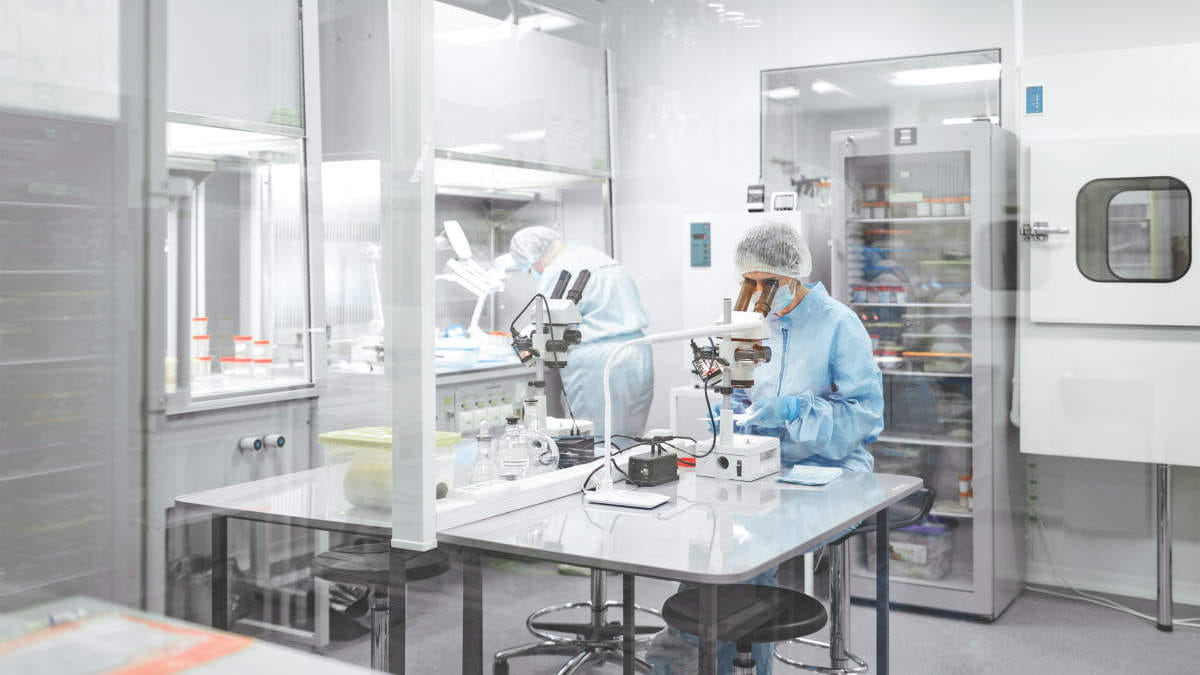
Gene therapy – creating safe and effective therapies
Gene therapy involves the transmission of genetic material into the patient's body cells to treat or potentially cure various genetic disorders.
Gene therapy is most commonly performed using viral-mediated gene transfer with Adeno-Associated Virus (AAV) or lentivirus. AAV vectors have a small packaging size (-5kb), but they are non-integrating viruses, offering prolonged transgene expression. They cannot propagate without helper viruses, which makes them safe for clinical use.
dPCR is also important in contamination control, which is an essential process in manufacturing environments aimed at minimizing and eliminating unwanted substances, particularly in the production of biopharmaceuticals. dPCR provides higher sensitivity of detection at a lower template input range, enabling more robust results.
Gene therapy workflow
Preparation
Plasmid preparation
and QC
In-process quality control
Virus vector titer and integrity
Product and process related impurities
- QIAcuity Residual DNA Quantification Kits and Standards*
- QIAcuity Mycoplasma Quant Kit and Standards
*In combination with the CGT lysis kit for mispackaged residual DNA/HCD
Final product quality control
Viral vector titer, integrity and potency
Purity and safety
- QIAcuity Residual DNA Quantification Kits and Standards*
- QIAcuity Mycoplasma Quant Kit and Standards
*In combination with the CGT lysis kit for mispackaged residual DNA/HCD
Resources for gene therapy applications
Contamination control
Contamination control involves rigorous procedures and standards to ensure that contaminants, such as residual host-cell DNA (resDNA or HCD), do not compromise product safety and efficacy. Residual HCD carryover poses major safety concerns when manufacturing protein and vaccine therapeutics. Risks include oncogenicity, infectivity and immunogenicity caused by the final product. Therefore, levels of HCD must not exceed those established by regulatory agencies such as the U.S. Food and Drug Administration and the World Health Organization.
Moreover, contaminating DNA in your PCR reagents can be a significant source of background and false positives. Ultra Clean Production enhances the specificity and efficiency of probe-based digital PCR to provide accurate, singleplex or up to 5-plex analysis. Dedicated processes are implemented to enable Ultra Clean Production of the master mix, which minimizes contaminating DNA background and GC bias and gives you absolute certainty in your PCR reagents. This makes it an ideal choice for contamination-free, microbial applications as well as quality control applications, like residual DNA testing.
Mycoplasma Detection
Mycoplasmas are common contaminants in biological products derived from cell lines in the biopharmaceutical industry. They are often introduced either from the source cell lines or during production. Various guidelines and technical papers address the risks of mycoplasma contamination in the manufacturing process.
Digital PCR is an effective method for detecting these mycoplasma contaminations in cell cultures and related biological products. For instance, the QIAcuity Mycoplasma Quant Kit is a highly sensitive RT-dPCR kit that detects rRNA and DNA, covering 127 mycoplasma species. The kit includes an internal control to prevent false negatives caused by PCR inhibitors or errors in RNA extraction and RT reactions.
Meanwhile, the QIAcuity Residual DNA Quantification Kits provide accurate CHO, E.coli and HEK293 residual DNA (resDNA) quantification results with or without extraction, even in the presence of PCR contaminants or other inhibitory reagents. The assays are multicopy target assays that accurately determine highly fragmented residual host cell DNA.




